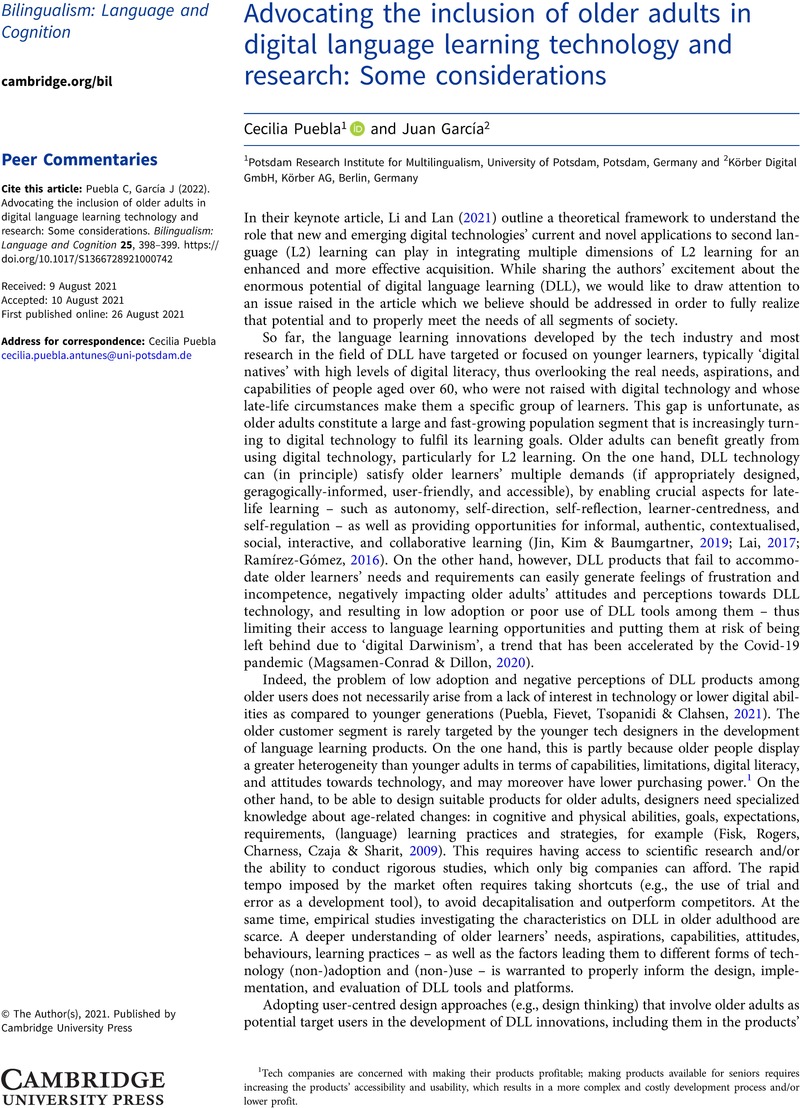Crossref Citations
This article has been cited by the following publications. This list is generated based on data provided by Crossref.
Li, Ping
and
Lan, Yu-Ju
2022.
Understanding the Interaction between Technology and the Learner: The Case of DLL.
Bilingualism: Language and Cognition,
Vol. 25,
Issue. 3,
p.
402.
Ali, Muhammad Mooneeb
2022.
Mobile and Sensor-Based Technologies in Higher Education.
p.
56.
Wei, Rining
Wang, Rong
and
Wang, Jing
2024.
Exploring English learning motivation among Chinese older adults.
Language Teaching Research,
Hwang, Hyun-Bin
Coss, Matthew D.
Loewen, Shawn
and
Tagarelli, Kaitlyn M.
2024.
Acceptance and engagement patterns of mobile-assisted language learning among non-conventional adult L2 learners: A survival analysis.
Studies in Second Language Acquisition,
p.
1.



